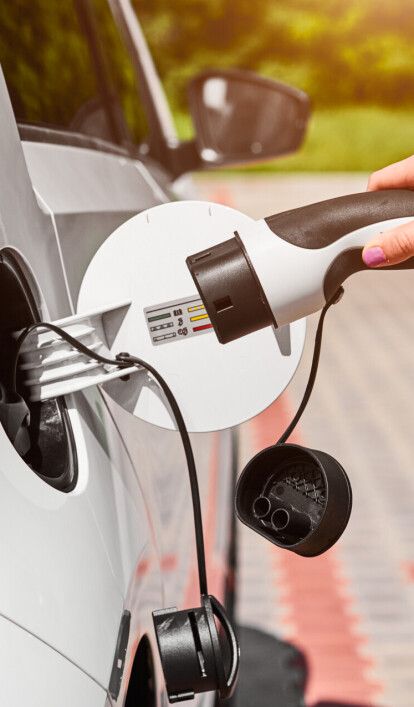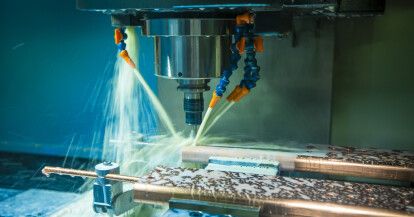Copper in the e-mobility sector. The role of copper in the development of the global electromobility market

Copper has been known to us since prehistory. Reliable, it has accompanied people in successive eras, gaining more applications.
Today, however, we are peering into the future, and in it - it can't be otherwise - a hugely important function falls to copper.
Although cobalt, lithium and nickel are most often mentioned when it comes to developing motors for the e-mobility industry, copper plays an equally important role in 21st century automotive applications - it is used in electric motors, batteries, inverters, wiring and charging stations (wiring, bus bars, connectors).

What do electric vehicles give us?
The intensive development of the electromobility sector is not only a move toward modern, exciting and advanced motoring. The electrification of road transportation also goes hand in hand with reduced greenhouse gas emissions and a reduced amount of carbon used in the automotive industry. Electric vehicles emit less carbon dioxide than internal combustion vehicles. Another advantage is lower energy expenses - the average annual cost of operating an electric car will be lower than for traditional vehicles.
The share of electric and hybrid cars in the automotive market is growing steadily. The availability of electric cars measured in the long term of use is improving despite the relatively high cost of purchase. However, the more advanced the development of battery technology for electric cars, the lower their prices will be. Annual sales of electric-powered vehicles are estimated to exceed 1 million vehicles in 2023, reaching more than 7% of annual sales by 2025. The total number of electric vehicles in 2025 is expected to rise to 7 million, and the number of charging ports to 5 million.

Copper and electromobility. What is copper used for in cars and other vehicles?
The dynamic development of the electromobility sector and the need to find alternative energy sources that minimize environmental impact and CO2 emissions into the atmosphere are of considerable importance for the growth of copper use. It is an important raw material for energy storage technologies.
"Ore gold," that is, this renewable, environmentally friendly, extremely durable and malleable metal, is used in a number of industries that are typical of modern technological development. We are talking about the production of photovoltaic panels, wind energy or just electromobility, among others. Copper in automotive and other industries improves their overall economic efficiency due to its numerous advantages.
All types of electric cars contain several times more copper than cars with internal combustion engines. Manufacturers of electric car components and charging stations rely primarily on copper's excellent electrical conductivity.

Copper is used for building energy-efficient electric motors
In the e-mobility sector, we will find copper in electric cars, but also in public charging points, or stations/chargers. When it comes to vehicles, copper is used for power cables, motor coils and inverters. In addition to batteries, copper is used in batteries and inverters. It is the copper components that allow intelligent motor management with power transmission.
The demand for copper will increase over the years, as we see a significant acceleration of the current trend - electric vehicles are our reality. Copper components for green cars are appearing not only in passenger cars - in the case of city buses and trucks we are often dealing with hybrid engines, which also could not exist without copper.
The electric vehicle revolution is growing faster and faster and is touching newer and newer areas. It is also approaching industry, construction and mining. Battery-powered electric fleets provide savings in maintenance, ventilation and cooling, and offer tremendous opportunities to reduce environmental impact and create a healthier work environment for workers in many industries around the world.

How much copper is in an electric car?
How much copper is needed for electric cars? According to data published by the Copper Development Association Inc. and sourced from the International Energy Agency, copper is a major component in electric motors, inverters, wiring and charging stations. To illustrate this, the association indicated the metal content in:
- conventional cars - about 8-22 kg of copper,
- hybrid cars - about 39 kg of copper,
- plug-in hybrid cars - about 60 kg of copper
- electric cars - about 83 kg of copper,
- hybrid buses - about 89 copper,
- electric buses - about 369 kg of copper

Copper in the automotive industry - electric car charging stations
To increase the number of electric cars on the market, further development of the infrastructure for charging them is needed. We are talking about public charging stations. To "add energy" to your vehicle, you need to connect it to such a station - and that's where copper comes in in the form of metal charging cable. In addition to this, it produces a wire that is mounted between the charger and the electrical panel.
Electric vehicle charging stations and the cars themselves also require bus bars or other components, such as connectors, connectors. Bus bars, or bus wires, are used for power distribution, electric power steering and AC/DC converters. In the e-mobility sector, bus bars made from a combination of copper and aluminum are the most popular, because they allow savings in weight and manufacturing costs. In addition, bus bars can be formed as desired. In addition, copper couplers and connectors can be found in charging stations.

Copper components for green cars - Electris
The potential that copper holds has long been discovered by Electris. The solutions Electris implements (such as an innovative process for cutting and laminating copper components, which will be a key component of state-of-the-art switchgear and power distribution systems), are often pioneering and setting industry trends.
Electris recently added innovative powder coating technology along with advanced masking techniques for electroplated copper busbars. This opens up new opportunities for the company to collaborate and manufacture for a number of companies in the e-mobility or battery sectors.
Components that Electris manufactures, such as customized bus bars, connectors, and liquid-cooled heat sinks are components of battery systems used in electric vehicles, among other applications.



